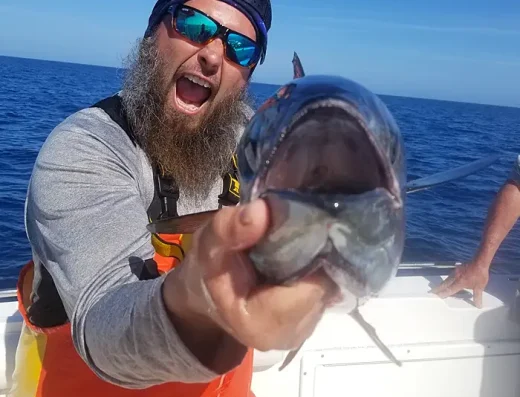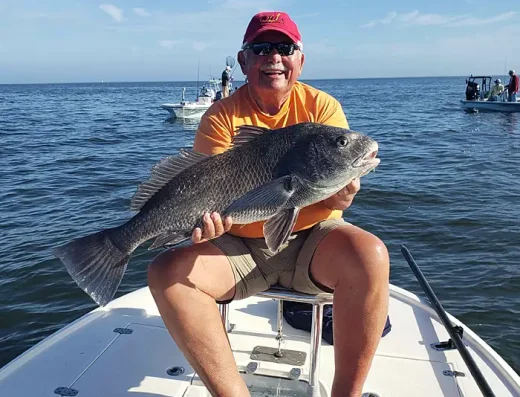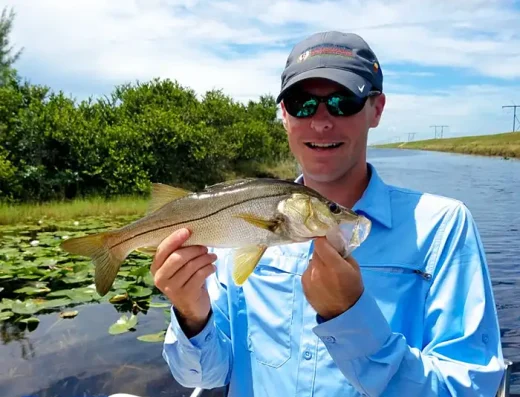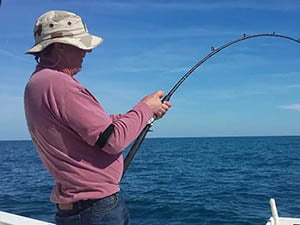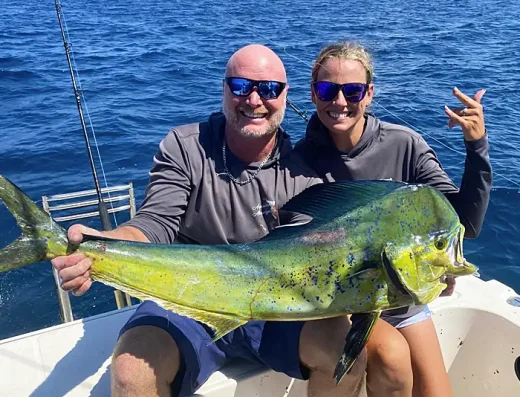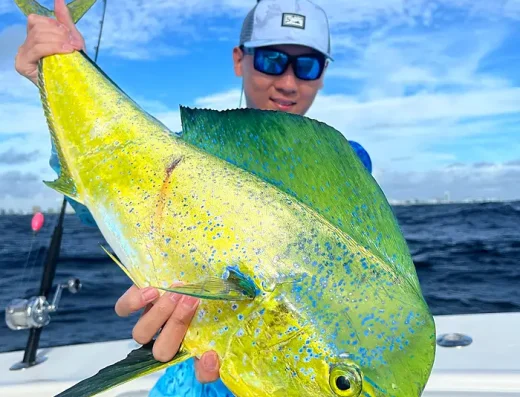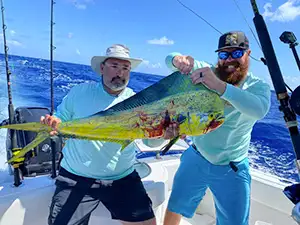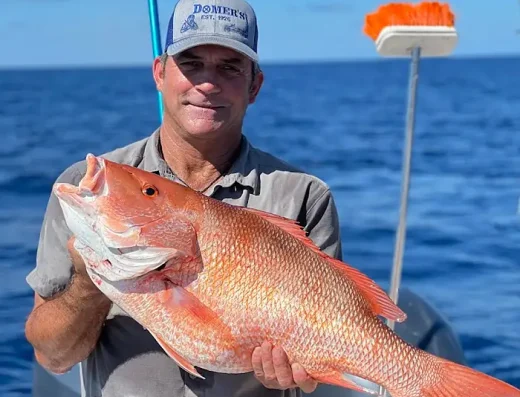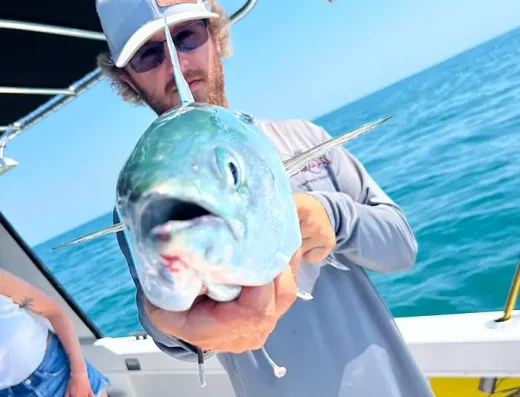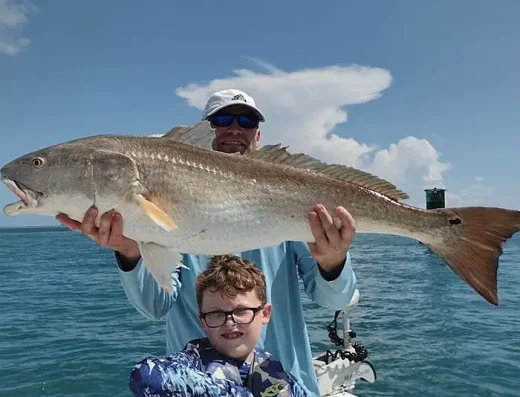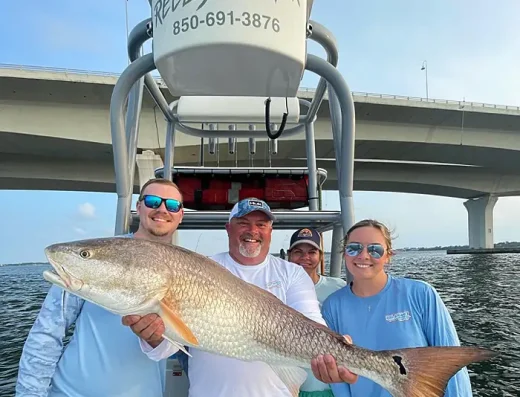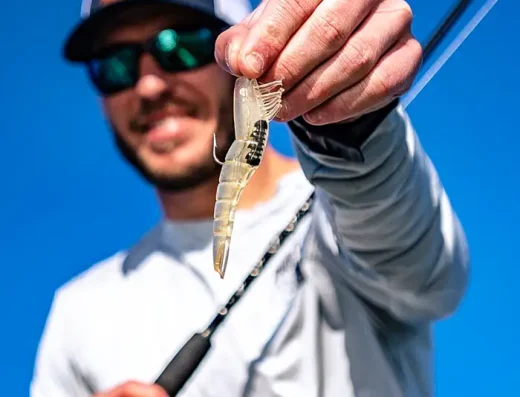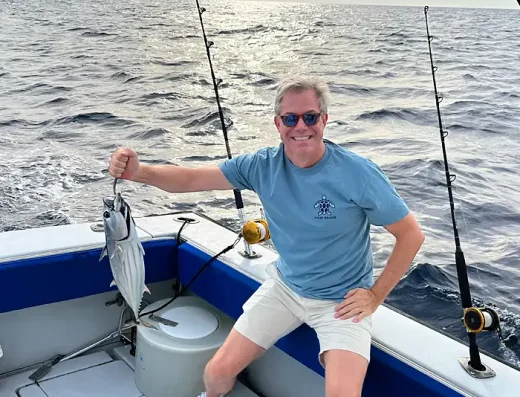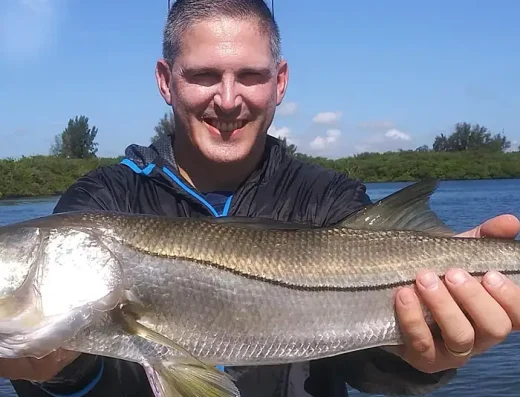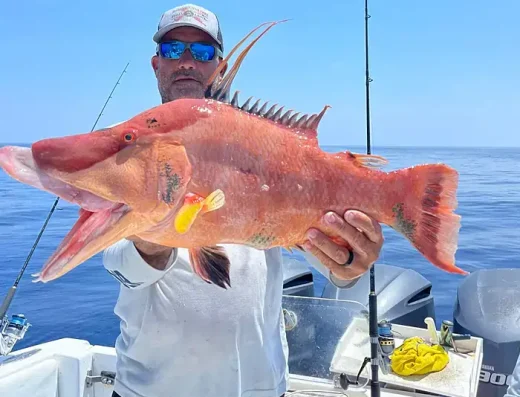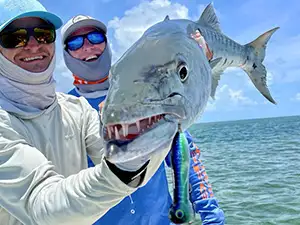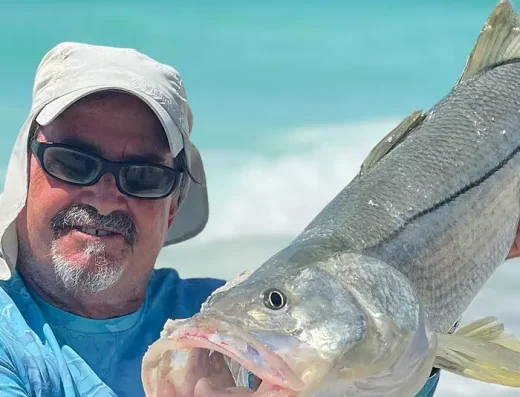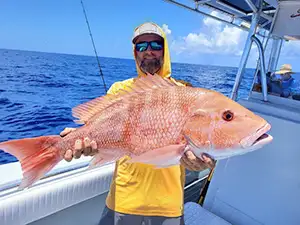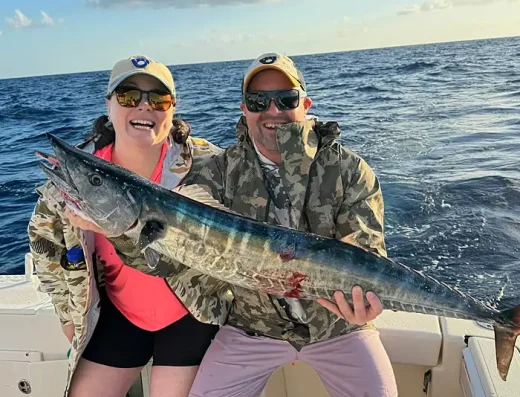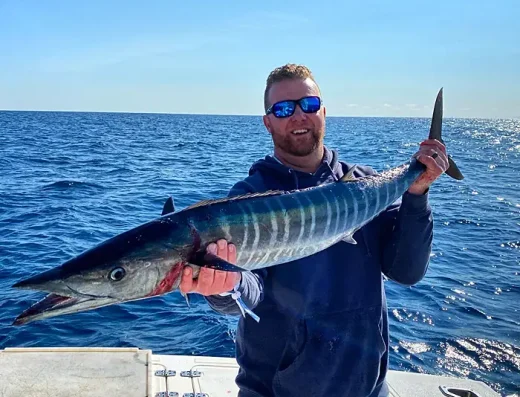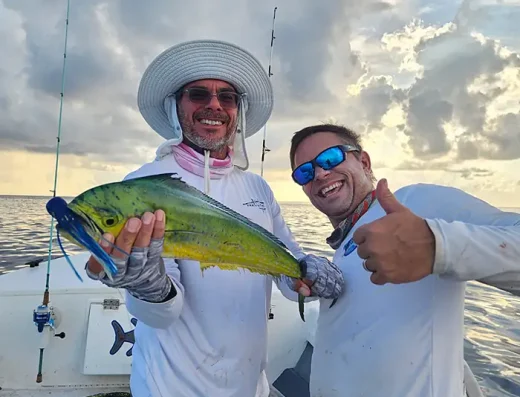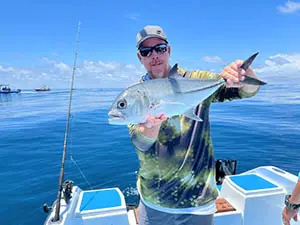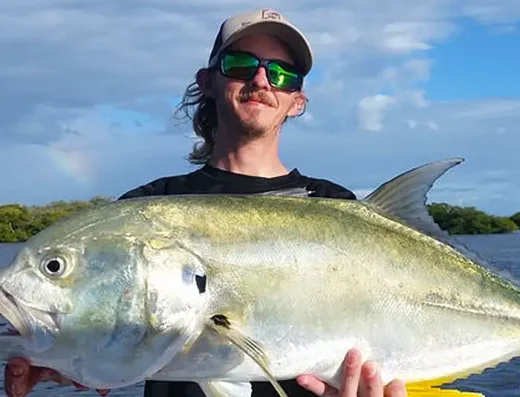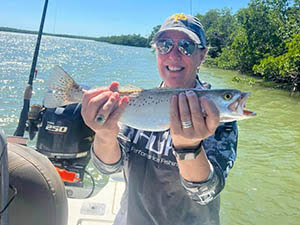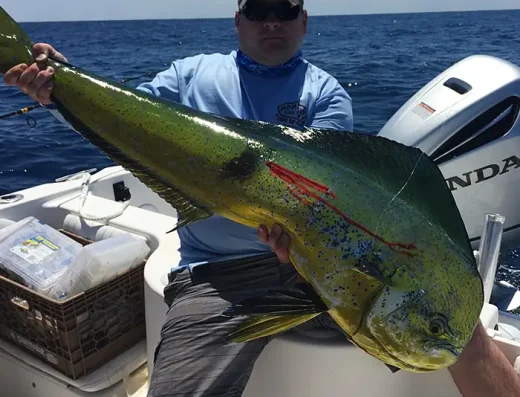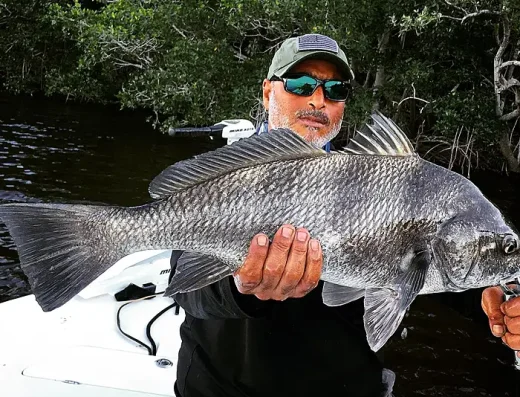Florida Fishing Charters
Florida fishing charters cover everything—skinny water redfish and snook in the back bays, offshore runs for sailfish and tuna, and freshwater hauls from bass-filled lakes.
TrustedFish connects anglers with proven local captains in Florida —no commissions, no pay-to-play listings, no BS. Every charter on our platform is invite-only, vetted for skill, local knowledge, and reputation. If they’re listed, they’ve earned it.
Top Rated Charters in Florida
Click to View Destinations
Florida Fishing Guide
Florida’s coastlines and inland waters offer more year-round fishing variety than anywhere else in the U.S. On the Gulf side, charters work the inshore marshes, flats, and passes from Pensacola to Everglades City for redfish, trout, snook, and tarpon. Farther out, reef and wreck trips target snapper, grouper, permit, and kingfish—while deep drop and trolling runs turn up swordfish, mahi, and blackfin tuna. On the Atlantic side, offshore boats out of places like Jupiter, Miami, and Islamorada chase sailfish, wahoo, and deep pelagic species in the Gulf Stream just 5–10 miles off the beach.
In between, freshwater lakes like Okeechobee, Toho, and the Harris Chain hold monster largemouth bass, with full-day guided trips running from daylight to early afternoon. Many captains offer half-day or 6-hour trips for those looking to stay close to shore, especially around Tampa Bay, Sarasota, or the Indian River Lagoon.
Common setups include freelined pilchards or pinfish for snook, popping corks with shrimp for trout, and live crabs for permit. Offshore crews often use vertical jigs or slow-trolled ballyhoo. Most ramps are minutes from the bite, with boats launching from city marinas, beachside slips, or private docks. Whether you’re poling through mangroves or blasting out past the 100-fathom line, Florida’s geography gives charters options no matter the weather or tide.
Regional Fishing Highlights
Florida Keys
From Key Largo to Key West, fishing here is year-round and world-class. Backcountry trips chase tarpon, bonefish, and permit on the flats, while reef trips target snapper and grouper within sight of land. Offshore runs hit the humps for tuna and mahi, or kite fish for sailfish in winter. Most charters launch from Islamorada, Marathon, or Stock Island.
Southwest Florida (Naples to Boca Grande)
This stretch of coast is all about the backwaters and passes. Snook, redfish, and sea trout feed in the mangroves and grass beds, especially around the Ten Thousand Islands. Tarpon fishing peaks in spring near Boca Grande Pass. Half-day inshore trips are standard, with live bait cast-netted on-site.
Central East Coast (Sebastian to Jupiter)
Jetty, beach, and nearshore wreck action drives this region. Kingfish, cobia, and permit show up inshore, with sailfish and blackfin tuna just a few miles out. Spring and winter kite fishing off Stuart and Jupiter is a specialty. Most trips are 6–8 hours, running light tackle or live baits.
Big Bend & Panhandle
Quieter than South Florida, but full of opportunity. Inshore charters work oyster bars and grass flats for redfish and trout near Steinhatchee and Apalachicola. Offshore, boats out of Destin and Panama City head for bottom species like amberjack and vermilion snapper. Many trips run 20–40 miles.
Lake Okeechobee & Central Florida
Okeechobee is the main draw, but Lake Kissimmee and the Butler Chain also hold big bass. Trips run early morning to noon with artificial frogs, Senkos, or shiners. Guides fish out of bass boats with trolling motors and electronics. Winter and spring are prime for numbers and size.
Fishing Seasons in Florida
Spring
Tarpon show up along the coasts, especially in the Keys and Boca Grande. Snook start moving out of the backcountry. Bass spawn in Okeechobee and Kissimmee. Offshore, sailfish and mahi bite hard on both coasts. Winds can be tough early but settle by April.
Summer
Tarpon show up along the coasts, especially in the Keys and Boca Grande. Snook start moving out of the backcountry. Bass spawn in Okeechobee and Kissimmee. Offshore, sailfish and mahi bite hard on both coasts. Winds can be tough early but settle by April.
Fall
Water cools and fish get active again. Bull reds school in the Panhandle. Snook return to backwaters. Offshore, wahoo and tuna push closer in the Atlantic. In the lakes, bass chase shad and feed aggressively. Great time for mixed-bag trips and fewer crowds.
Winter
Sailfish peak on the Atlantic coast, especially south of Palm Beach. Sheepshead, pompano, and black drum become mainstays inshore. Cold fronts can shut down bass fishing briefly, but clear days still produce. Shallow Gulf water cools fast, so slower presentations work better.
Most Popular Gamefish in Florida
- Snook – 20–40 inches. Caught in mangroves, bridges, and passes with live pilchards or jigs.
- Tarpon – 50–150+ lbs. Found in back bays and beaches spring through summer. Crabs, mullet, or swimbaits under floats.
- Redfish – 18–40 inches. Sight-fished on flats or soaked bait near oyster bars.
- Sailfish – 30–70 lbs. Kite fished with goggle-eyes offshore, especially winter off Jupiter.
- Mahi Mahi – 5–30 lbs. Troll ballyhoo or drift weedlines 10–30 miles out.
- Largemouth Bass – 1–10+ lbs. Target early on topwater or pitch plastics into vegetation.
- Speckled Trout – 12–24 inches. Drifted grass flats with popping corks and shrimp.
- Grouper – 10–50 lbs. Bottom-fished with pinfish or jigs near reefs.
- Blackfin Tuna – 10–30 lbs. Caught trolling or chunking near offshore humps.
Florida Fishing FAQs
Do I need a fishing license to go on a Florida charter?
If you’re on a licensed charter, no license is needed—the captain covers it. For solo or DIY fishing, you’ll need a saltwater or freshwater license depending on the trip.
What’s the best time of year to fish in Florida?
Spring and fall offer the most consistent action across the board, but it really depends on what species you’re after. Tarpon and bass peak in spring, sailfish and sheepshead in winter.
Where can I catch tarpon in Florida?
Tarpon show up from the Keys to the Panhandle, but top spots include Boca Grande Pass, the Everglades, and along the beaches of the southeast coast during their spring and summer migration.
Can I fish both saltwater and freshwater in Florida?
Yes, many areas—like around Naples or Central Florida—offer both within an hour’s drive. Just make sure your license or charter covers the right water.
Are kids welcome on Florida fishing charters?
Absolutely. Many guides offer shorter, family-friendly trips in calm inshore waters. Just let the captain know in advance so they can prep the right gear and bait.
How far offshore do Florida deep sea charters go?
Atlantic coast trips often hit the Gulf Stream 5–15 miles out. Gulf trips may run 20–60 miles depending on target species and weather.
What should I bring on a charter in Florida?
Bring sun protection (hat, sunscreen, glasses), a small cooler with drinks/snacks, and a towel. Most gear, bait, and licenses are included.
Do Florida charters fish at night?
Yes, especially in summer. Night tarpon trips in the Keys or docklight snook fishing near Naples are common. Offshore swordfish trips also run overnight.
What kind of bait is used on Florida charters?
Live pilchards, shrimp, crabs, mullet, and pinfish are common inshore. Offshore trips may use ballyhoo, squid, or chunked bonito depending on the species.

